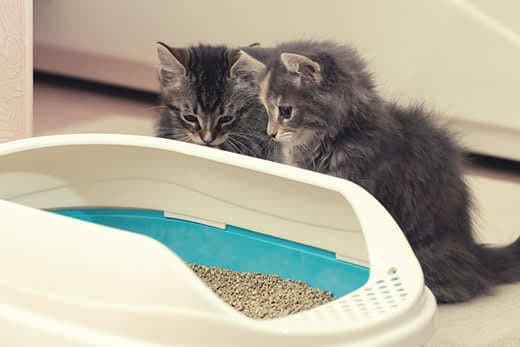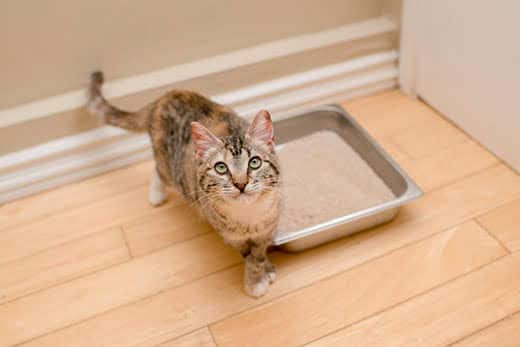With so many types of cat litter on the market today, choosing the right one can be a confusing task. How do you know what is the best cat litter for your feline friend?
The best cat litter is the one that your cat likes and will use. However, it's also important to choose a cat litter that works well for you, too, because you're the cat clean-up crew. Finding the perfect cat litter involves answering questions such as, how do I know what my cat likes? Do I want clumping or non-clumping? Scented or unscented? Should I talk to my veterinarian before switching to a different cat litter? Use this guide to answer these questions and help you select a cat litter that works best for you and your cat.
Considerations to Keep in Mind
If you're bringing home a new cat or thinking about trying a new type of litter for your current feline family member, speak with your vet beforehand to get their recommendations. Then, think about litter characteristics such as texture, absorbency and ease of use.
Texture is particularly important, noted the ASPCA, because cats are sensitive to what litter feels like on their paws. If they don't like the feel of what's in their litter box, they may find a different place to use as a cat bathroom (plants, carpet and sometimes even your bed).
Types of Cat Litter
The types of cat litter available on the market vary in terms of consistency, clumping ability and scent.
Consistency Choices
Clay
There are two types of cat litter made from clay: non-clumping and clumping. Clay-based non-clumping cat litter was introduced to the market in 1947, and in the 1980s, clumping cat litter was discovered. Prior to that, cat parents relied on sand (which is why cats can't resist an uncovered children's sandbox). Most cats prefer fine-textured clay litter over other types, said Dr. Pam Perry, a feline behavior specialist at the Cornell University College of Veterinary Medicine. Clay granules are similar to the soft soil or sand that cats use in the wild. Both non-clumping and clumping litter can produce dust, but some clay cat litters are specifically formulated to produce less dust.

Made of clear silica gel (just like the little packets of gel that come in a box of new shoes), crystal cat litter is more expensive than other types of cat litter. But it's absorbent, produces less dust than other materials and actively cleans the litter box, which is good news for cats and humans, noted VetInfo. Your cat may not like the feel of the rough crystals, but smoother pearl-like options are available. Like non-clumping clay litter, crystal litter can become saturated and urine will pool in the box. And as with clumping litter, you shouldn't use crystal litter until your cat is beyond the "eating feces" stage of life. Silica gel can be toxic when ingested by your cat, dog or other pet that may like to play in the cat box.
Other Natural Materials
Many natural alternatives to traditional clay litter are available, including paper, pine, wheat, nutshells and corn. International Cat Care pointed out that "many of these are lightweight, biodegradable and have excellent odour-neutralizing properties," making them desirable options. For those humans and cats with environmental allergies and asthma, many natural types of cat litter, such as walnut, come in pellet form, and some natural cat litters, like those made with corn kernels, are clumping, reducing the amount of dust in the air and litter strewn about the house. However, if you or your cat have food allergies or intolerance, read the ingredient labels carefully to ensure the litter is safe to use in your home.
Clumping vs. Non-Clumping Choices
To clump or not to clump? Inquiring cat parents want to know.
Non-Clumping
Non-clumping litter is popular because it's affordable — you can get a giant bag for not much money — and it's great at absorbing urine and odors. With non-clumping clay litter, your cat is less likely to scatter litter around the house because its larger granules don't cling to their paws the way other types of cat litter do. One drawback of non-clumping litter is that it requires switching out the litter completely at least once a week; otherwise, the litter becomes too saturated and urine will puddle at the bottom of the box.

It's a good rule of thumb to avoid clumping cat litter with cats of any age that ingest feces. If your cat eats their feces and/or litter, call your vet right away to determine the cause.
Post time: Apr-01-2025
